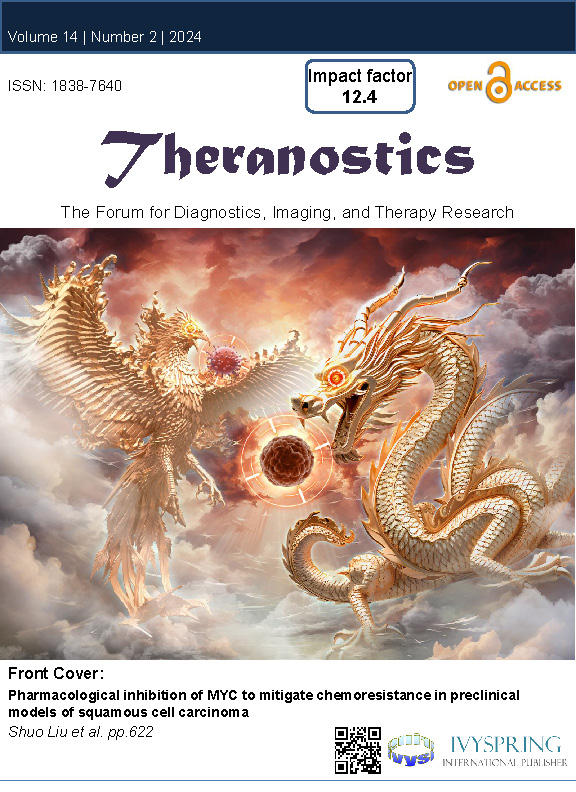m6A 阅读器 YTHDC2 通过调节星形胶质细胞中 SLC7A11 依赖性谷氨酸失调,促进颞叶癫痫的病理生理学发展
IF 12.4
1区 医学
Q1 MEDICINE, RESEARCH & EXPERIMENTAL
引用次数: 0
摘要
理由:全球有 7000 多万人受到癫痫的影响,其中伴有海马硬化的颞叶癫痫(TLE-HS)往往会发展到耐药状态。最近的研究强调了反应性星形胶质细胞和谷氨酸失调在癫痫病理生理学中的作用。本研究旨在探讨星形胶质细胞 xCT(一种谷氨酸-胱氨酸反转运体)在 TLE-HS 中的参与及其受 m6A 阅读蛋白 YTHDC2 的调控:方法:采用皮洛卡品诱导的小鼠癫痫模型来研究xCT在反应性星形胶质细胞中的作用。通过各种分子和细胞技术评估了xCT的表达及其受YTHDC2的调控。定量实时聚合酶链反应(qRT-PCR)和免疫印迹技术分别用于测量xCT和YTHDC2的mRNA和蛋白水平;免疫荧光技术用于观察它们在星形胶质细胞中的定位和表达。使用微透析法进行体内谷氨酸测量,以监测海马的细胞外谷氨酸水平。进行了 RNA 免疫沉淀-qPCR(RIP-qPCR)以研究 YTHDC2 与 SLC7A11 mRNA 的结合,同时进行了甲基化 RNA 免疫沉淀-qPCR(MeRIP-qPCR)以量化 SLC7A11 mRNA 上的 m6A 修饰。采用双荧光素酶报告实验评估了 m6A 修饰对 SLC7A11 mRNA 翻译的影响,并采用多聚体分析评估了 SLC7A11 mRNA 的翻译效率。抑制实验涉及 shRNA 介导的星形胶质细胞中 SLC7A11(俗称 xCT)和 YTHDC2 表达的敲除。视频脑电图(EEG)记录用于监测小鼠的癫痫发作活动:反应性星形胶质细胞中的 xCT 转运体能显著促进细胞外谷氨酸水平的升高,从而增强神经元的兴奋性和癫痫发作活动。xCT 表达的增加受 m6A 阅读蛋白 YTHDC2 的影响,后者通过 m6A 甲基化调节其表达。在小鼠模型中,抑制星形胶质细胞中的 xCT 或 YTHDC2 可降低谷氨酸水平并有效控制癫痫发作。具体来说,SLC7A11-或YTHDC2-敲除星形胶质细胞的小鼠海马中谷氨酸浓度降低,癫痫发作的频率和持续时间减少:这项研究强调了靶向反应性星形胶质细胞中的 YTHDC2 和 xCT 缓解癫痫的治疗潜力。研究结果为谷氨酸失调的机制及其在癫痫发作病理生理学中的影响提供了一个新的视角,表明调节YTHDC2和xCT可能是治疗TLE的一种有前途的策略。本文章由计算机程序翻译,如有差异,请以英文原文为准。
The m6A reader YTHDC2 promotes the pathophysiology of temporal lobe epilepsy by modulating SLC7A11-dependent glutamate dysregulation in astrocytes
Rationale: Epilepsy affects over 70 million people globally, with temporal lobe epilepsy with hippocampal sclerosis (TLE-HS) often progressing to a drug-resistant state. Recent research has highlighted the role of reactive astrocytes and glutamate dysregulation in epilepsy pathophysiology. This study aims to investigate the involvement of astrocytic xCT, a glutamate-cystine antiporter, and its regulation by the m6A reader protein YTHDC2 in TLE-HS./nMethods: A pilocarpine-induced epilepsy model in mice was used to study the role of xCT in reactive astrocytes. The expression of xCT and its regulation by YTHDC2 were assessed through various molecular and cellular techniques. Quantitative real-time polymerase chain reaction (qRT-PCR) and western blotting were used to measure mRNA and protein levels of xCT and YTHDC2, respectively; immunofluorescence was utilized to visualize their localization and expression in astrocytes. In vivo glutamate measurements were conducted using microdialysis to monitor extracellular glutamate levels in the hippocampus. RNA immunoprecipitation-qPCR (RIP-qPCR) was performed to investigate the binding of YTHDC2 to SLC7A11 mRNA, while methylated RNA immunoprecipitation-qPCR (MeRIP-qPCR) was performed to quantify m6A modifications on SLC7A11 mRNA. A dual-luciferase reporter assay was conducted to assess the effect of m6A modifications on SLC7A11 mRNA translation, and polysome profiling was employed to evaluate the translational efficiency of SLC7A11 mRNA. Inhibition experiments involved shRNA-mediated knockdown of SLC7A11 (commonly known as xCT) and YTHDC2 expression in astrocytes. Video-electroencephalogram (EEG) recordings were used to monitor seizure activity in mice./nResults: The xCT transporter in reactive astrocytes significantly contributes to elevated extracellular glutamate levels, enhancing neuronal excitability and seizure activity. Increased xCT expression is influenced by the m6A reader protein YTHDC2, which regulates its expression through m6A methylation. Inhibition of xCT or YTHDC2 in astrocytes reduces glutamate levels and effectively controls seizures in a mouse model. Specifically, mice with SLC7A11- or YTHDC2-knockdown astrocytes showed decreased glutamate concentration in the hippocampus and reduced frequency and duration of epileptic seizures./nConclusions: This study highlights the therapeutic potential of targeting YTHDC2 and xCT in reactive astrocytes to mitigate epilepsy. The findings provide a novel perspective on the mechanisms of glutamate dysregulation and their implications in seizure pathophysiology, suggesting that modulation of YTHDC2 and xCT could be a promising strategy for treating TLE.
求助全文
通过发布文献求助,成功后即可免费获取论文全文。
去求助
来源期刊

Theranostics
MEDICINE, RESEARCH & EXPERIMENTAL-
CiteScore
25.40
自引率
1.60%
发文量
433
审稿时长
1 months
期刊介绍:
Theranostics serves as a pivotal platform for the exchange of clinical and scientific insights within the diagnostic and therapeutic molecular and nanomedicine community, along with allied professions engaged in integrating molecular imaging and therapy. As a multidisciplinary journal, Theranostics showcases innovative research articles spanning fields such as in vitro diagnostics and prognostics, in vivo molecular imaging, molecular therapeutics, image-guided therapy, biosensor technology, nanobiosensors, bioelectronics, system biology, translational medicine, point-of-care applications, and personalized medicine. Encouraging a broad spectrum of biomedical research with potential theranostic applications, the journal rigorously peer-reviews primary research, alongside publishing reviews, news, and commentary that aim to bridge the gap between the laboratory, clinic, and biotechnology industries.
 求助内容:
求助内容: 应助结果提醒方式:
应助结果提醒方式:


